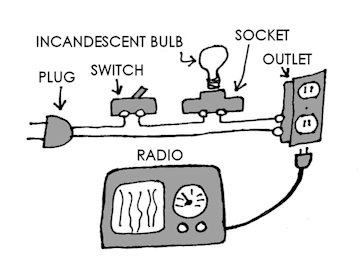Ahhh! So you are saying it's a good idea to use a combination of Variac and Light Bulb..!?
That makes sense, I take it you would start with the Variac first, feeding your Light bulb set up from it - and then feed the equipment you are working on from the Light bulb...?
Cheers,
Tom
That makes sense, I take it you would start with the Variac first, feeding your Light bulb set up from it - and then feed the equipment you are working on from the Light bulb...?
Cheers,
Tom
Quote from: DrewV on April 17, 2012, 10:57:08 PM
I'll just make a couple comments here. Regarding the level of bulb brightness, I have found that different amps draw more or less current while "idleing" causing the bulb glow a little brighter or dimmer. Second, to prevent a situation like JM described always use a variac to bring the voltage up gently. If the amp is drawing excessive current you'll see it before you raise the V to high.

 the rails where around 35 VDC.
the rails where around 35 VDC.
